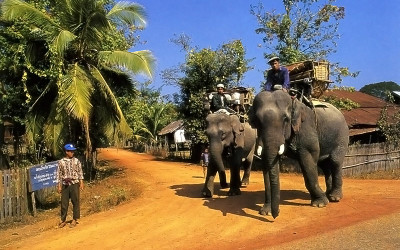AKIPRESS.COM -  The Asian elephant has long been associated with local culture and national identity in Laos, but an Australian study is sounding the alarm bell, its days may be numbered, Radio Australia said.
The Asian elephant has long been associated with local culture and national identity in Laos, but an Australian study is sounding the alarm bell, its days may be numbered, Radio Australia said.
Elephants in captivity also face the risk of extinction in the next hundred years, if nothing is done now. The study by the University of Queensland estimates that only 480 captive working elephants remain across Laos.
The study by UQ's School of Geography, Planning and Environmental Management, says the risk of extinction is because captive elephants are not allowed to breed at a sufficient and sustainable rate.
There are more captive elephants now in Laos, than there are wild ones, according to Dr. Greg Baxter, senior author on the study. Baxter noticed that there're probably fewer than two hundred in the wild, and between four hundred and eighty to five hundred in captivity.
Elephants in captivity are mainly owned by family enterprises and are put to work in the tourism industry and used for ceremonial purposes. Others work in the diminishing logging industry.
Laos was once known as the Land of a Million Elephants – their images on street signs and relief carvings in temples, testament to their revered role in Lao culture.
The time frame may be a hundred years before the captive elephants face extinction in Laos, but the window of opportunity is really much narrower.
Many working female elephants are already over the age of forty, and they have about fifteen years left to have calves. Typically, it takes about four years for an elephant to be taken out of service to have her calf. This is because the female has to be rested, to have the young, to suckle it and nurture it to independence.
And many mahouts (elephant owners or drivers) simply cannot afford for the elephants to be out of service for so long.
Greg Baxter says a longer term solution is not to regard the Lao elephant population in isolation, but to allow them to breed with elephants from other parts of the range of the Asian elephant family, from other Asian countries who face dwindling numbers.
He says while Asian elephants in captivity don't face immediate extinction, acting now will buy them many more years, not just in Laos but also the rest of Asia. “By allowing between ten and twenty percent of the female population to breed every year, we can stretch the extinction process to about 200 years, to give the Asian elephant some 'breathing space'.”
